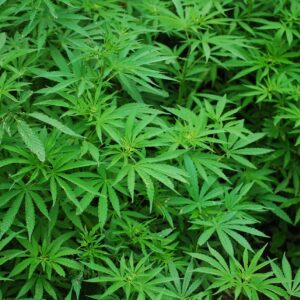
It’s Not Your Grandfather’s Pot
It’s true, marijuana has been around a long time. It’s long remembered as the herb of the ‘60s and ‘70s. Most people who lived through this time may remember it fondly, albeit a bit hazy. What most people don’t know though is gone are the days of low tetrahydrocannabinol (THC) levels in pot.
In previous decades, low levels of this chemical, around 4% THC, meant relatively mild psychological effects. Fast forward to today’s retail stores across Washington state and products below 10% THC are non-existent. Now consider highly concentrated marijuana products, known as dabs, where the concentrations can exceed 90% THC. Today’s marijuana is definitely not your grandfather’s pot.
When discussing marijuana use with patients, it’s critical that providers understand this new era of products. Of further concern, research on the impact of highly concentrated THC is lacking. Lower THC concentrations and risks to the developing brain, for instance, behavioral issues, decreased cognitive abilities and decreased memory, are fairly well-established, but research has yet to catch up to higher concentrations. Safe to say that higher concentrations will not correlate with decreased health effects to a growing brain or a developing baby.
Carrying out this research has its obvious challenges. Studying the effects of marijuana use on a developing fetus relies on a mother self-reporting her use. Yet, some findings do exist and they indicate frequent marijuana use can cause placental complications, low birthweight, or premature birth[1][2][3]. Further, the American Academy of Pediatrics recommends against breastfeeding if a woman is heavily using marijuana as it is stored in fat cells and transferred to the baby[4] where it can be stored for several weeks. Infants who are exposed to THC during breastfeeding have been shown to experience increased tremors, poor sucking, slow weight gain, and poor feeding in the first month of life[5][6].
Some research has shown learning and behavioral impacts in childhood for children who were born to women who used marijuana while pregnant but, again, much more research is needed to understand the connection.
As a child grows, so too does the evidence proving negative consequences to still-growing brains. Youth can experience consequences from using marijuana including higher risk of addiction, and decreased memory, attention, and judgement, as well as other unknown effects that still need to be studied. Thankfully, for people in Washington state who are 21 and under, marijuana use is illegal. Discouragingly, although the law prohibits use by minors, roughly 1 in 5 Spokane County 10th grade students reported using marijuana in the past thirty days[7]. A clinician’s help is paramount in changing this norm and educating parents and youth alike of the risks.
There is no doubt that providers’ time is limited when they see patients, but in a new and legal marijuana climate, where there are still a lot of unknowns, there is no better time to talk about marijuana use.
If you would like more information about SHRD’s Tobacco, Vaping Device, and Marijuana Prevention and Control Program you can visit www.srhd.org or contact Paige McGowan at 509-324-1504 or email pmcgowan@srhd.org.
[1] Huizink AC. Prenatal cannabis exposure and infant outcomes: overview of studies. Prog Neuropsychopharmacol Biol Psychiatry 2014;52:45-52. htp://dx.doi.org/10.1016/j.pnpbp.2013.09.014
[2] Janisse JJ, Bailey BA, Ager J, Sokol RJ. Alcohol, tobacco, cocaine, and marijuana use: relative contributions to preterm delivery and fetal growth restriction. Subst Abuse 2014;35(1):60-7. htp://dx.doi.org/10.1080/08897077.2013.804483
[3] Warner TD, Roussos-Ross D, Behnke M. It’s not your mother’s marijuana: effects on maternal-fetal health and the developing child. Clin Perinatol 2014;41(4):877-94. htp://dx.doi.org/10.1016/j.clp.2014.08.009
[4] American Academy of Pediatrics (AAP). Policy statement: Breastfeeding and the use of human milk. Pediatrics 2012;129 (3):e827-e841. htp://dx.doi.org/10.1542/peds.2011-3552
[5] Miller CW. Marijuana use and breastfeeding. Clinical Lactation 2012;3-3:102-107. Free online: htp://dhss.alaska.gov/dpa/Documents/dpa/programs/nutri/wic/newsleters/2012-12-07/MarijuanaBreasteeding.pdf
[6] Washington State Dept. of Health. Substance Abuse During Pregnancy: Guidelines for Screening and Management, rev. 2015.
[7]Healthy Youth Survey, 2014
